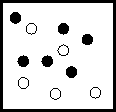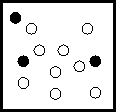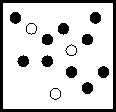 Exam 1A, Spring 2006
Exam 1A, Spring 2006 Exam 1A, Spring 2006
Exam 1A, Spring 20061. Consider the reaction between dihydrogen phosphate ion and carbonate ion that gives hydrogen carbonate ion and hydrogen phosphate ion as products.
a. Write the balanced reaction.
b. Assuming that this is an elementary reaction, write the rate law.
2. Briefly (15 words or less) distinguish between a rate law and a rate constant.
3. For the reaction: A(g) + B(g) → Products; the initial rate is 0.0010 mole·L–1s–1. The reaction was allowed to continue and the rate was measured again 20 minutes later. The rate found in the second measurement was 0.0011 mole·L–1s–1. What is the order of the reaction?
4. A reaction, A(g) → Products, was studied. In the first experiment the initial concentration was [A]o = 1.500 M; after 10.0 s the concentration the reactant was found to be [A] = 1.400 M. In the second experiment the initial concentration was [A]o = 2.600 M and after 100.0 s [A] = 1.600 M.
a. What is the initial rate for the first experiment?
b. What is the initial rate for the second experiment?
c. What is the rate law?
d. What is the value of the rate constant?
5. Consider the reaction:
S2O82–(aq) + 3 I–(aq) → 2 SO42–(aq) + I3–(aq)
The following data was measured:
Experiment [S2O82–] (M) [I–] (M) Initial Rate (M min–1)
1 0.10 0.10 6.0×10–5
2 0.10 0.20 1.2×10–4
3 0.30 0.10 1.8×10–4
a. What is the rate law for the reaction?
b. What is the value of the rate constant for the reaction?
6. The following mechanism was proposed for a reaction:
OCl–(aq) + H2O(l)
HOCl(aq) + OH–(aq) fast
I–(aq) + HOCl(aq)
HOI(aq) + Cl–(aq) slow
HOI(aq) + OH–(aq)
H2O(l) + OI–(aq) fast
a. Write the net reaction.
b. Predict the rate law based on this mechanism.
7. The following data was found for a second order reaction:
time (s) [reactant] (M)
0 1.00
1 0.67
2 0.50
3 0.40
4 0.33
What is the half–life of the reaction?
8. Consider the three reaction containers shown below:



A B C
The rate law is given by Rate = k[·]. Which reaction container will react fastest? Briefly explain your reasoning.
9. Catalysis increases the rate of a reaction by lowering the activation energy. Briefly explain how this occurs.